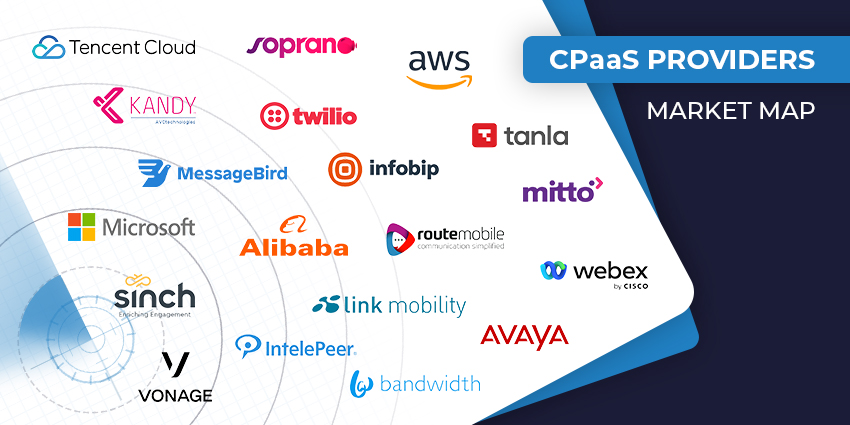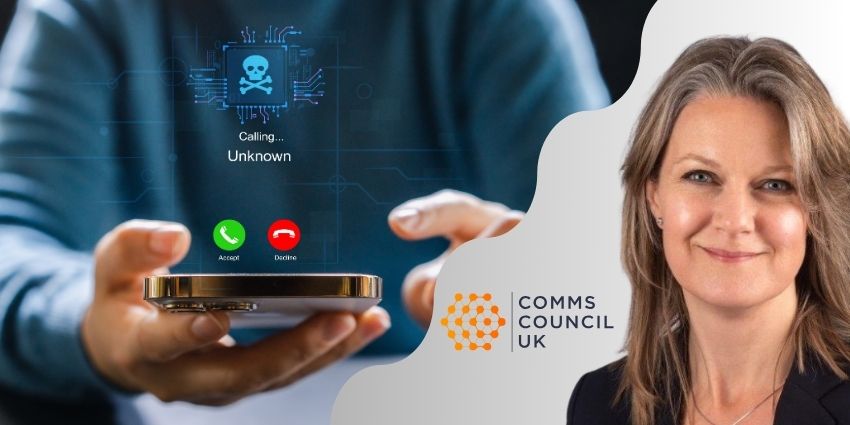Communication Platforms as a Service or CPaaS solutions have emerged as the ultimate opportunity for businesses to shape their communication stacks to suit their unique needs. As companies of all sizes continue to embrace the benefits of a flexible cloud infrastructure, CPaaS gives us the freedom that we need to implement everything from real-time communication, to artificial intelligence and analytics into daily workflows and processes.
Unlike UCaaS (Unified Communications as a Service), CPaaS uses SDKs and APIs to embed the tools you need for communication into your existing applications. By 2022, the CPaaS industry will already be worth a massive $10.9 billion, and the vendors in this sector are continuing to grow.
Let’s explore the trends that are driving the evolution of CPaaS in 2020.
CPaaS and the Demand for Omnichannel UX
One of the biggest benefits of CPaaS as the foundation of your communication stack, is that you can use this technology to create a truly unlimited omnichannel environment. In the past, omnichannel communication used to refer to a combined strategy for email, voice, and fax. Now, however, vendors are delivering CPaaS solutions that allow businesses to unlock brand-new ways of communicating with their customers.
CPaaS APIs and SDKs can provide access to everything from SMS and text messaging platforms to social media tools like Facebook Messenger. As today’s consumers continue to prize businesses that communicate with them on the platforms they choose, this true omnichannel approach will be essential to business growth.
Heading into 2020 and beyond, CPaaS vendors will continue to add more channels to their platforms, from WhatsApp, to Rich Communication Services (RCS) and video. More importantly, your CPaaS solution will ensure that all of your communication channels are connected, so that you can monitor conversations in a single place.
The Programmable Contact Centre
CPaaS also opens the door for a new age of “programmable” communications. Essentially, this means that companies can have more granular control over every aspect of their communication stack, from their contact centres, to their SMS and voice strategies.
A programmable contact centre, for instance, will allow you to tweak and tailor every aspect of the experience that you give to your target audience. In an age where customer experience is the most important consideration for any business, this control is essential. Programmable contact centres allow business leaders to customize everything from the interface that their agents use, to the communication channels available, and the routing strategies you access.
Through APIs and SDKs, you can also implement strategies that make your contact centre more compliant with the latest security and privacy strategies, by ensuring that information is stored correctly. You might decide to start a call with an IVR message that acquires consent for a call to be recorded, ensuring compliance with GDPR.
The programmable contact centre environment means that businesses of all sizes can create unique and personalised experiences for their audience. What’s more, because you buy the functionality that you need chunk by chunk, you’re not paying for anything that you’re not going to use.
Other Elements of Programmable Communications
As companies continue to outgrow the need for a one-size-fits-all basic environment for communications, programmable communications could be the future. Taking the flexibility and control of programmable contact centres and embedding them into the back end of business communication enhances user experience, cost savings, and business opportunities.
For instance, with CPaaS for programmable SMS, business leaders can ensure that they have the right strategies in place to reach their audience through text. They can determine which triggers should determine when a text should be sent, and how contact centre agents can interact with messages that are sent to the business. SMS APIs and SDKs can come with access to multi-language support, advanced reporting features, and even intelligent routing to ensure that the right customers get the right messages.
In the same vein, programmable voice allows businesses to tap into the benefits of things like crystal-clear audio at every stage of the customer journey, and access to a local ID. You can create global points of presence, and ensure complete call flow management, so that problems are addressed quickly, and customers end up with better experiences overall. The right CPaaS provider can even offer access to features like:
- Virtual and programmable numbers
- Scalable SIP trunking
- Masked numbers
- Custom hold music
- Text to speech
When every aspect of your communication stack, from your chat strategy, through to your numbers, are fully programmable, you can build a custom-made strategy for customer experience that adapts according to the needs of your customers. In larger businesses that have offices around the world, it’s even possible to create distinct audience experiences for consumers from different parts of the globe.
CPaaS Authentication for Security and Compliance
CPaaS technology doesn’t just give businesses the opportunity to implement real-time communication tools into their existing workflows. You can also use the APIs and SDKs of CPaaS to implement new solutions for authentication, security, and compliance too.
For instance, an API in your communication environment can request employees to use two-factor authentication methods before they access crucial documents. An alternative application used to help filter and route customers calling your contact centre could use things like biometric voice recognition or other modes of authentication to reduce the risk of toll fraud.
Authentication in the CPaaS environment can even take the form of something simple, like an IVR that asks your customer for permission to record a call, so you never have to worry about falling foul of problems with GDPR guidelines.
With CPaaS, businesses can ensure that they’re not only offering their customers better, more customised experiences, but also interactions that are safer and more compliant too.
The Demand for CPaaS is Growing
One-size-fits-all environments just aren’t an option for most of today’s businesses.
The world, as we know it is evolving at an incredible rate. The companies that survive are the ones that can recognise the changing needs of their customers and implement new solutions at a rapid pace. CPaaS allows for this quick adoption of new trends and technology.
With CPaaS, companies of all sizes can pivot and change their strategies whenever they need to, to suit the needs of their customers when it comes to everything from omnichannel communications, to programmable journeys, and authentication.







